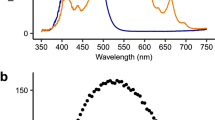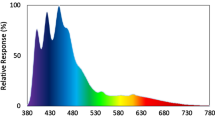Abstract
Ulvaria obscura, a prominent component of green tide blooms in Washington, is unique among macroalgae because it contains dopamine. To examine dopamine release by U. obscura following simulated low tides, we conducted 6 field experiments in which algae were emersed for 75 min and then immersed in filtered seawater (FSW). Dopamine was measured in algal tissues prior to emersion and 3 h after immersion and in seawater for 3 h following immersion. In our experiments, algae released 7–100% of their tissue dopamine, resulting in average seawater concentrations of 3–563 μM. In 5 of 6 experiments, seawater dopamine concentrations were highest immediately after immersion, and then decreased over time. The percentages of dopamine released were not correlated with tissue dopamine concentrations, but were positively correlated with solar radiation during emersion. The release of dopamine, which is both cytotoxic and genotoxic, may explain the negative effects of U. obscura exudates on marine organisms.





Similar content being viewed by others
References
Apel K, Hirt H (2004) Reactive oxygen species: metabolism, oxidative stress, and signal transduction. Annu Rev Plant Biol 55:373–399
Brock E, Nyland G, Pavia H (2007) Chemical inhibition of barnacle larval settlement by the brown alga Fucus vesiculosus. Mar Ecol Prog Ser 337:165–174
Conover JT, Sieburth JM (1956) Effect of tannins treated from Phaeophyta on planktonic animal survival in tide pools. Proc Ann Seaweed Symp 5:99–100
Cronin G (2001) Resource allocation in seaweeds and marine invertebrates: chemical defense patterns in relation to defense theories. In: McClintock J, Baker BJ (eds) Marine chemical ecology. CRC Press, Boca Raton, pp 325–354
Denboh T, Suzuki M, Mizuno Y, Ichimura T (1997) Suppression of Laminaria sporelings by allelochemicals from coralline red algae. Bot Mar 40:249–256
Dworjanyn S, De Nys R, Steinberg P (1999) Localisation and surface quantification of secondary metabolites in the red alga Delisea pulchra. Mar Biol 133:727–736
Eppley R, Bovell C (1958) Sulfuric acid in Desmarestia. Biol Bull 115:101–106
Frankenstein G (2000) Blooms of ulvoids in Puget sound. Puget Sound Water Quality Action Team, Olympia, WA
Graham D, Tiffany S, Bell WJ, Gutknecht W (1978) Autoxidation versus covalent binding of quinones as the mechanism of toxicity of dopamine, 6-hydroxydopamine, and related compounds toward C1300 neuroblastoma cells in vitro. Mol Pharmacol 14:644–653
Halliwell B, Gutteridge J (1989) Free radicals in biology and medicine. Oxford University Press, Oxford, England
Harder T, Dobretsov S, Qian P-Y (2004) Waterborne polar macromolecules act as algal antifoulants in the seaweed Ulva reticulata. Mar Ecol Prog Ser 274:133–141
Lane A, Kubanek J (2008) Secondary metabolite defenses against pathogens and biofoulers. In: Amsler CD (ed) Algal chemical ecology. Springer, Berlin, pp 229–243
Lesser M (2006) Oxidative stress in marine environments: biochemistry and physiological ecology. Annu Rev Physiol 68:253–278
Lyons D, Van Alstyne KL, Scheibling R (2007) Anti-grazing activity and seasonal variation of dimethylsulfoniopropionate-associated compounds in the invasive alga Codium fragile ssp. tomentosoides. Mar Biol 153:179–188
Mason H (1948) The chemistry of melanin. III. Mechanism of the oxidation of dihydroxyphenylalanine by tyrosinase. J Biol Chem 172:83–99
McLachlan J, Craigie JS (1964) Algal inhibition by yellow ultraviolet-absorbing substances from Fucus vesiculosus. Can J Bot 42:287–292
McLachlan J, Craigie JS (1966) Antialgal activity of some phenols. J Phycol 2:133–135
Nelson TA, Lee A (2001) A manipulative experiment demonstrates that blooms of the macroalga Ulvaria obscura can reduce eelgrass shoot density. Aquat Bot 71:149–154
Nelson T, Lee D, Smith B (2003a) Are “green tides” harmful algal blooms? Toxic properties of water-soluble extracts from two bloom-forming macroalgae, Ulva fenestrata and Ulvaria obscura (Ulvophyceae). J Phycol 39:874–879
Nelson TA, Nelson AV, Tjoelker M (2003b) Seasonal and spatial patterns of “green tides” (ulvoid algal blooms) and related water quality parameters in the coastal waters of Washington State, USA. Bot Mar 46:263–275
Nelson T, Olson J, Imhoff L, Nelson A (2010) Aerial exposure and desiccation tolerances are correlated to species composition in “green tides” of the Salish Sea (northeastern Pacific). Bot Mar 53:103–111
NOAA (2009) Tidal current tables 2009: Pacific coast of North America and Asia. North Wind Publishing, Belfast
O’Clair R, Lindstrom S (2000) North Pacific seaweeds. Plant Press, Auke Bay
Palmer J (1963) Banana polyphenoloxidase. Preparation and properties. Plant Physiol 38:508–511
Pelletreau K, Muller-Parker G (2002) Sulfuric acid in the phaeophyte alga Desmarestia munda deters feeding by the sea urchin Strongylocentrotus droebachiensis. Mar Biol 141:1–9
Price L, Hylleberg J (1982) Algal-faunal interactions in a mat of Ulva fenestrata in False Bay, Washington. Ophelia 21:75–88
Ragan MA (1976) Physodes and the phenolic compounds of brown algae. Composition and significant of physodes in vivo. Bot Mar 19:145–154
Ross C, Van Alstyne KL (2007) Intraspecific variation in stress-induced hydrogen peroxide scavenging by the ulvoid macroalga Ulva lactuca. J Phycol 43:466–474
Schoenwaelder M (2002) The occurrence and cellular significance of physodes in brown algae. Phycologia 41:125–139
Shah Z, Sharma P, Vohora S (2003) Ginkgo biloba normalises stress-elevated alterations in brain catecholamines, serotonin and plasma corticosterone levels. Eur Neuropharm 13:321–325
Sieburth JMN (1960) Acrylic acid, and “antibiotic” principle in Phaeocystis blooms in Antarctic waters. Science 132:676–677
Sokal RR, Rohlf FJ (1995) Biometry: the principles and practice of statistics in biological research. Freeman, New York
Steinberg PD, deNys R (2002) Chemical mediation of the colonization of seaweed surfaces. J Phycol 38:621–629
Steinberg PD, de Nys R, Kjelleberg S (1997) Chemical inhibition of epibiota by Australian seaweeds. Biofouling 12:227–244
Stokes A, Hastings T, Vrana K (1999) Cytotoxic and genotoxic potential of dopamine. J Neurosci Res 55:659–665
Tan T, Chen Y (1992) Enzymatic oxidation of dopamine by polyphenol oxidase. Int J Chem Kinet 24:1023–1034
Tocher RD, Craigie JS (1966) Enzymes of marine algae: II. Isolation and identification of 3 hydroxytyramine as the phenolase substrate in Monostroma fuscum. Can J Bot 44:605–608
Tocher RD, Meeuse BJD (1966) Enzymes of marine algae: I. Studies of phenolase in the green alga, Monostroma fuscum. Can J Bot 44:551–561
Valiantas J (2006) Simplified versions of the Penman evaporation equation using routine weather data. J Hydrol 331:690–702
Van Alstyne KL, Houser LT (2003) Dimethylsulfide release during macroinvertebrate grazing and its role as an activated chemical defense. Mar Ecol Prog Ser 250:175–181
Van Alstyne KL, Puglisi MP (2007) DMSP in marine macroalgae and macroinvertebrates: distribution, function, and ecological impacts. Aquat Sci 69:394–402
Van Alstyne KL, Dethier MN, Duggins DO (2001a) Spatial patterns in macroalgal chemical defenses. In: McClintock J, Baker W (eds) Marine chemical ecology. CRC Press, Boca Raton, pp 301–324
Van Alstyne KL, Wolfe GV, Freidenburg TL, Neill A, Hicken C (2001b) Activated defense systems in marine macroalgae: evidence for an ecological role for DMSP cleavage. Mar Ecol Prog Ser 213:53–65
Van Alstyne KL, Nelson AV, Vyvyan J, Cancilla D (2006) Dopamine functions as an antiherbivore defense in the temperate green alga Ulvaria obscura. Oecologia 148:304–311
Van Alstyne KL, Koellermeier L, Nelson T (2007) Spatial variation in dimethylsulfoniopropionate (DMSP) production in Ulva lactuca (Chlorophyta) from the Northeast Pacific. Mar Biol 150:1127–1135
Whitehead R, Ferrer J, Javitch J, Justice J (2001) Reaction of oxidized dopamine with endogenous cysteine residues in the human dopamine transporter. J Neurochem 76:1242–1251
Young D, Howard B, Fenical W (1980) Subcellular localization of brominated secondary metabolites in the red alga Laurencia snyderae. J Phycol 16:182–185
Acknowledgments
We thank A. Nicely, A. Gehman, L. Chomiczewski and M. E. Salyan for their assistance with field and laboratory work and 2 anonymous reviewers whose comments improved the manuscript. R. Ridgway suggested sodium metabisulfite as a means of inhibiting dopamine oxidation. N. Schwarck at the Shannon Point Marine Center assisted with obtaining the weather data. This study was funded by grants NA05NOS4781192 from the National Atmospheric and Oceanic Administration and OCE-0526644 and IOB-0090825 from the National Science Foundation to K. Van Alstyne. This paper is number 634 from the Ecology and Oceanography of Harmful Algal Blooms (ECOHAB) program.
Author information
Authors and Affiliations
Corresponding author
Additional information
Communicated by P. Ralph.
Rights and permissions
About this article
Cite this article
Van Alstyne, K.L., Anderson, K.J., Winans, A.K. et al. Dopamine release by the green alga Ulvaria obscura after simulated immersion by incoming tides. Mar Biol 158, 2087–2094 (2011). https://doi.org/10.1007/s00227-011-1716-5
Received:
Accepted:
Published:
Issue Date:
DOI: https://doi.org/10.1007/s00227-011-1716-5




